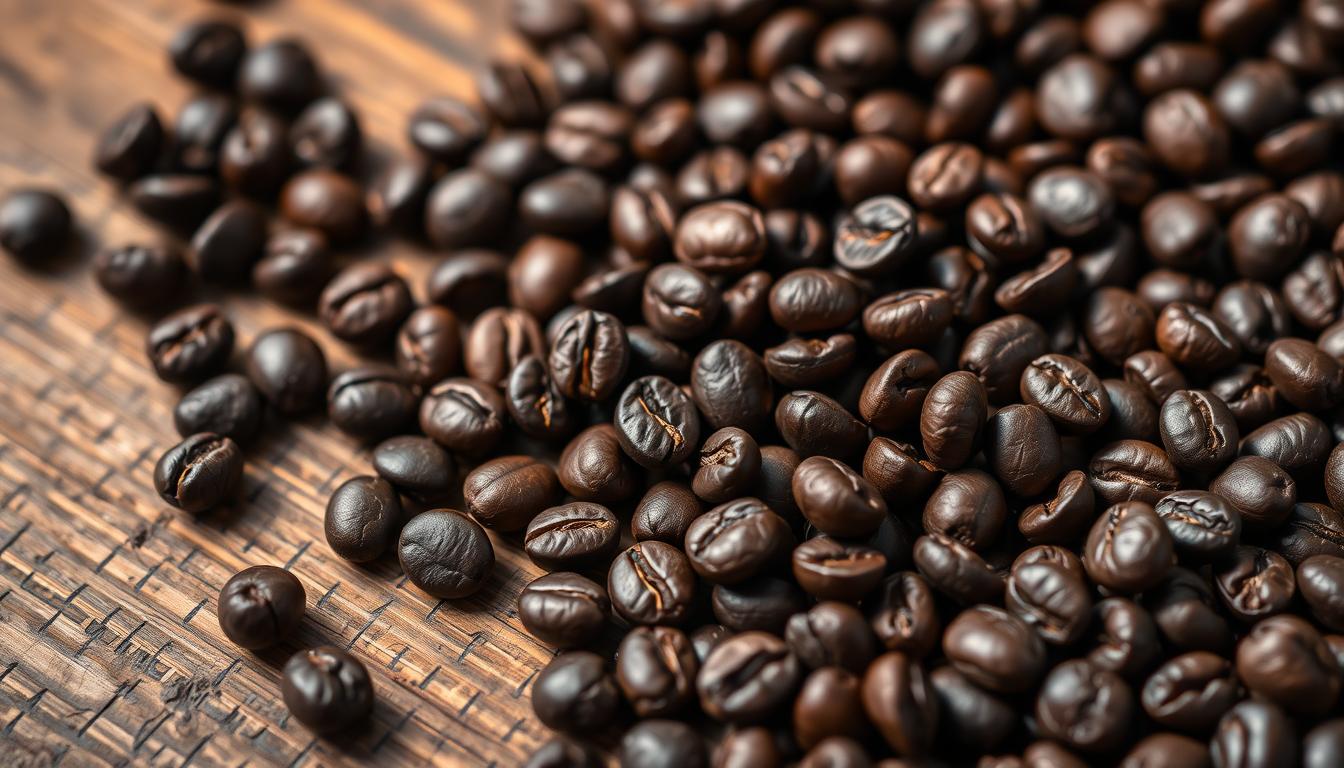There are over 120 coffee species, each with its own taste and traits. Finding the right espresso beans can be thrilling yet challenging. The key to a great espresso is knowing what makes a coffee perfect for it.
The right roast level and freshness are critical. Your choice of beans greatly affects the espresso’s quality. This is true whether you’re brewing at home or in a cafe.
So, what makes the best coffee for espresso? How do you pick the right beans for a top-notch espresso? Let’s explore the world of espresso coffee and learn what to look for in your next beans.
Key Takeaways
- Espresso is a brewing method, not a specific type of coffee bean.
- Freshly roasted beans between 7-21 days off roast are ideal for optimal crema production.
- Medium to darker roasted coffees are suggested for espresso due to their consistent taste.
- Certain single-origin, delicate coffees may not be suitable for espresso brewing.
- Espresso blends with a balance of familiar dark roast flavors are often preferred.
Espresso Beans Fundamentals
Choosing the right coffee beans is key to a great espresso. “Espresso beans” are coffee beans picked and roasted just for espresso. The roast level greatly affects the taste of your espresso.
What Makes Coffee Beans “Espresso Beans”
Espresso beans mix Arabica and Robusta. Robusta adds to the crema and flavor. They’re roasted to a medium or dark level for that thick, intense espresso taste.
The Role of Roasting in Espresso Coffee
Roasting is essential for espresso’s unique taste. Traditional blends are darker, for a bolder taste. But, lighter roasts offer a more complex flavor.
Fresh Roasted vs Aged Beans Impact
Freshness is key for espresso. Beans should be used within 7 to 21 days for the best crema and flavor. Aged beans might lack the crema and taste bitter.
“The perfect espresso is a harmonious balance of sweetness, acidity, and bitterness, with a thick, creamy texture and a persistent, fragrant crema.”
What Coffee to Use for Espresso
Choosing the right coffee beans is key for a perfect espresso. Arabica is often preferred for its better taste. Single-origin beans offer a unique taste, but blends are more consistent.
Medium to dark roasts are best for espresso. They bring out chocolate, caramel, and nutty flavors. But, lighter roasts can add a bright, fruity acidity for more complexity.
- Arabica coffee is known for its complex flavors and is a popular choice for espresso.
- Robusta coffee can also be used for espresso, but it tends to have a more intense, bittersweet profile.
- Single-origin espresso beans can offer a unique flavor experience, but blends may provide more consistent results.
Experimenting with different coffee origins and roast levels is important. This way, you can find the arabica coffee for espresso, robusta coffee for espresso, or single origin espresso that makes your espresso stand out.
“The perfect espresso is a balance of sweetness, acidity, and bitterness – a true symphony of flavors.”
Best Roast Profiles for Espresso Making
Choosing the right roast profile is key to making perfect espresso. Espresso fans often argue over dark, medium, and light roasts. Each has its own special qualities. Let’s look at the good and bad of each to find the best for you.
Dark Roast Characteristics
Dark roast espresso coffee is often seen as the true espresso. These beans have deep, chocolatey flavors that many love. But, if roasted too dark, they can taste bitter or ashy, hiding the espresso’s true flavors.
Medium Roast Benefits
Medium roast espresso beans are a great middle ground. They offer a mix of flavor and body, making them easier to brew. Medium roasts can bring out a variety of tastes, from fruity to smooth.
Light Roast Possibilities
For those who like to try new things, light roast espresso beans are worth a shot. They have bright, acidic flavors that can make espresso taste fruity or floral. But, getting the best out of light roasts takes practice and knowledge.
Choosing the right roast for espresso is all about what you like and what you want your shot to taste like. Try different roasts to find the one that’s just right for you.

“The choice of roast profile depends on personal preference and the desired flavor profile in the final espresso shot.”
Single Origin vs Blends for Espresso
The specialty coffee world has grown, and so have our choices. We now enjoy both single origin espresso and espresso coffee blends. Each has its own perks, fitting different tastes and skills.
Single origin espressos show off the unique tastes of a single place. Coffee lovers and pros love them for their varied flavors. But, they can be tricky to get right every time.

Espresso blends, on the other hand, aim for a steady taste all year. They’re known for their balanced, sweet flavors with hints of chocolate and caramel. This makes them a favorite for daily espresso.
“Espresso blends are preferred for their complex flavor profiles, consistent shot-pulling, and long-term blend enjoyment.”
Roasters give us both single origin and blended espresso. This lets us pick what we like best. Single origin espressos are exciting and memorable. But, blends are more consistent and easy to use.
Choosing between single origin and blends depends on what you like and how skilled you are. Both have their good points. Exploring them can be a fun journey for coffee lovers.
Conclusion
Choosing the best coffee for your espresso machine depends on your taste and the machine’s features. Traditional espresso blends offer a balanced flavor. Single-origin coffees provide a unique taste.
Freshness, roast level, and grind size are key for the perfect espresso. Try different beans and roast levels to find your favorite. The right machine and grinder are also important for great flavor.
Whether you like dark, bold coffee or smooth, medium roast, consider the origin and roast level. Finding the right coffee can make your espresso at home amazing. Enjoy a truly exceptional cup of coffee.







